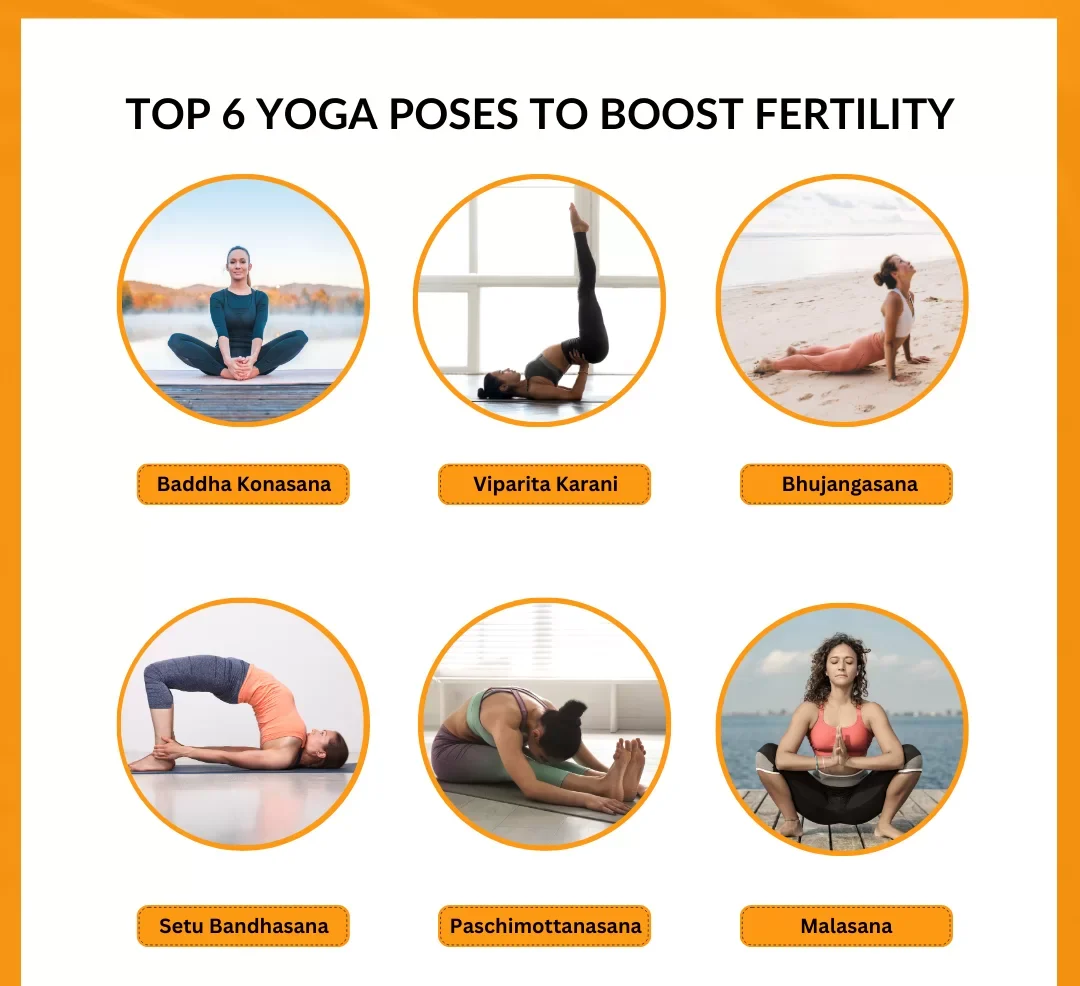Table of Contents
Introduction
Fertility challenges can be deeply emotional and physically taxing for both men and women. While medical science offers numerous advanced treatments such as IVF and IUI, many couples are increasingly turning to holistic methods like yoga to support their reproductive journey. But does yoga really help with fertility? The answer lies in a growing body of evidence that shows how mindful movement, breathwork, and stress reduction can have a profound effect on hormonal balance, reproductive health, and emotional wellbeing.
In this blog, we explore how yoga impacts male and female fertility, scientific evidence backing its effectiveness, and how to integrate yoga into your daily routine as a supportive tool alongside medical treatment.

1. The Fertility-Yoga Connection: How Does It Work?
Yoga works on multiple levels—physical, hormonal, emotional – which all play a crucial role in fertility.
a) Stress Reduction Stress is a major barrier to fertility. It disrupts the hypothalamic-pituitary-gonadal axis, impacting ovulation in women and sperm production in men. Yoga activates the parasympathetic nervous system, helping reduce cortisol and adrenaline levels, which in turn supports reproductive hormone balance.
b) Improved Blood Flow to Pelvic Organs Many yoga poses promote circulation in the pelvic region, supporting the health of the ovaries, uterus, testes, and prostate.
c) Hormonal Balance Certain yoga practices stimulate the endocrine glands—like the thyroid, adrenal, and pituitary—helping balance estrogen, progesterone, testosterone, and other key hormones for conception.
d) Detoxification and Organ Function Twisting and compression poses support the liver, kidneys, and digestive system—critical organs for hormone processing and detoxification.
e) Emotional Stability Yoga and pranayama (breathwork) help manage anxiety, depression, and emotional burnout—common among couples struggling with infertility.
2. Benefits of Yoga for Female Fertility
For women, yoga can support various phases of the menstrual cycle and enhance reproductive health in multiple ways:
-
- Regulates menstrual cycles
-
- Supports ovulation and follicular development
-
- Improves uterine lining receptivity
-
- Alleviates symptoms of PCOS and endometriosis
-
- Reduces cortisol and promotes progesterone production
Yoga is especially beneficial for women undergoing fertility treatments by helping manage the side effects of hormonal medications and emotional fluctuations.
3. Benefits of Yoga for Male Fertility
For men, yoga improves sperm quality, testosterone levels, and overall reproductive function. Regular practice can help:
-
- Improve sperm count, motility, and morphology
-
- Reduce oxidative stress and DNA fragmentation
-
- Balance testosterone and other reproductive hormones
-
- Boost libido and erectile function
-
- Reduce performance anxiety and psychological stress
4. Breathwork (Pranayama) for Fertility
Pranayama is a powerful tool in fertility yoga. Conscious breathing techniques help manage anxiety and stimulate the parasympathetic nervous system.
5. Scientific Evidence Supporting Yoga for Fertility
While yoga is an ancient practice, modern science is catching up with its benefits:
-
- A 2018 study in the Journal of Human Reproductive Sciences found that women undergoing IVF who practiced yoga showed reduced anxiety and improved pregnancy outcomes.
-
- A study in Fertility and Sterility found that mindfulness and yoga-based interventions improved sperm parameters in men.
-
- Harvard Medical School reported that women who participated in a yoga-based mind-body program had significantly higher pregnancy rates than those who did not.
6. Yoga for Couples: Enhancing Connection and Synchrony
Practicing yoga together can strengthen the emotional and physical bond between partners. Couple’s yoga includes synchronized breathwork, gentle stretches, and guided meditation promote:
-
- Mutual support
-
- Emotional intimacy
-
- Stress reduction as a unit
- Shared mindfulness on the fertility journey

7. When to Practice Yoga During Fertility Treatment
Yoga should be tailored to the stage of your fertility journey:
-
- Pre-Conception: Full practice focusing on strength, detoxification, and stress reduction.
-
- During Ovulation or Treatment Cycles (like IUI/IVF): Gentle, restorative yoga with emphasis on breathwork.
-
- Post-Embryo Transfer or 2-Week Wait: Avoid intense poses. Stick to meditation, gentle breathing, and restful positions like Viparita Karani.
-
- Post-Conception: Always consult your fertility specialist or prenatal yoga expert before continuing.
8. Safety Tips for Practicing Fertility Yoga
-
- Always inform and discuss with your fertility specialist what kind of yoga practice is appropriate for the stage of fertility treatment.
-
- Practice yoga under the guidance of a trained professional.
9. Final Thoughts: Yoga as a Holistic Companion to Fertility Treatment
Yoga is not a magic cure—but it is a powerful ally. By integrating yoga into your fertility journey, you’re not only supporting your physical reproductive system but also nurturing emotional strength, patience, and resilience. Whether you are just starting to plan pregnancy, dealing with PCOS, or undergoing IVF, yoga helps in improving physical and mental health.
At Kamna Fertility, we believe in a compassionate, personalised approach to treatment—and that includes supporting holistic practices like yoga. By blending ancient wisdom with cutting-edge reproductive science, you can move forward on your fertility journey with strength and serenity



